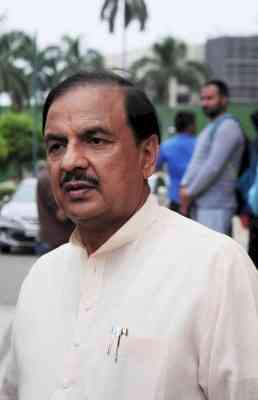Preventing Suicide: Reaching Out & Saving Lives
Author(s): City Air NewsLudhiana, September 9, 2015: News about farmer suicides, teenagers overdosing and other similar news related to suicide hog the pages of newspapers daily. Suicide in India has become a major concern in past few...

Ludhiana, September 9, 2015: News about farmer suicides, teenagers overdosing and other similar news related to suicide hog the pages of newspapers daily. Suicide in India has become a major concern in past few years as the younger population i.e. 15-44 year, have shown an increased suicide rate of 26/lakh/year population which is much more than the national average of 11.2 suicides/lakh/year. The govt. of India in order to decrease the stigma associated with suicide has decriminalized suicide, information that needs to be conveyed. Suicide prevention is an integral part of the Mental Health Action Plan (WHO), with the goal of reducing the rate of suicide in countries by 10% by the year 2020. On this 10th of September the International Association for Suicide Prevention observes “World Suicide Prevention Day” with a theme of ‘Preventing Suicide: Reaching Out & Saving Lives’
Social, psychological, cultural and other factors interact to lead a person to suicidal behavior, but the stigma attached to mental disorders and suicide means that many people feel unable to seek help. Despite the evidence that many deaths are preventable, suicide is often a low priority for governments and policy-makers. The objective of the ‘World Suicide Prevention Day’ is to prioritize suicide prevention and to raise awareness about suicide as a public health issue.
Risk factors at the individual level include previous suicide attempts, mental disorders, substance dependence, financial loss, chronic pain, family history of suicide, chronic illness leading to disability, conflictual relationship.
“Universal” prevention strategies, are designed to reach an entire population, aim to increase access to health care, promote mental health, reduce harmful use of substances & limit access to the means for suicide. “Selective” prevention strategies target vulnerable groups such as persons who have suffered trauma, abuse, affected by conflict or disaster, refugees, migrants by offering services such as helplines. “Indicated” strategies target specific vulnerable individuals with community support, follow-up for those leaving health-care facilities, education and training for health workers, and improved identification and management of mental and substance use disorders. Prevention can also be strengthened by encouraging protective factors such as strong personal relationships, a personal belief system and positive coping strategies.
As per, Dr. Ranjive Mahajan, Professor & Head, Department of Psychiatry, DMC & H, Ludhiana, Suicides are preventable. Mental disorders and harmful use of substances of abuse contribute to many suicides around the world. Early identification and effective management are key to ensuring that people receive the care they need. Health-care services need to incorporate suicide prevention as a core component. Restricting access to the means for suicide, including pesticides, firearms and certain medications can help control the suicide rate. Also the community needs to provide social support to vulnerable individuals and fight stigma. The Department of Psychiatry at DMC & H is also organizing a workshop and an interactive session with its faculty and residents to sensitize them about assessment of risk factors for suicide.
Dr. Sandeep Puri, Principal, DMC & H on this occasion conveyed a message that preventing suicide is possible, with proper awareness of risk factors of suicide. All doctors can train themselves for assessment of suicide risk and help their patients. When equipped with this knowledge we can Reach Out & Save Lives. Every life counts.

 cityairnews
cityairnews 













